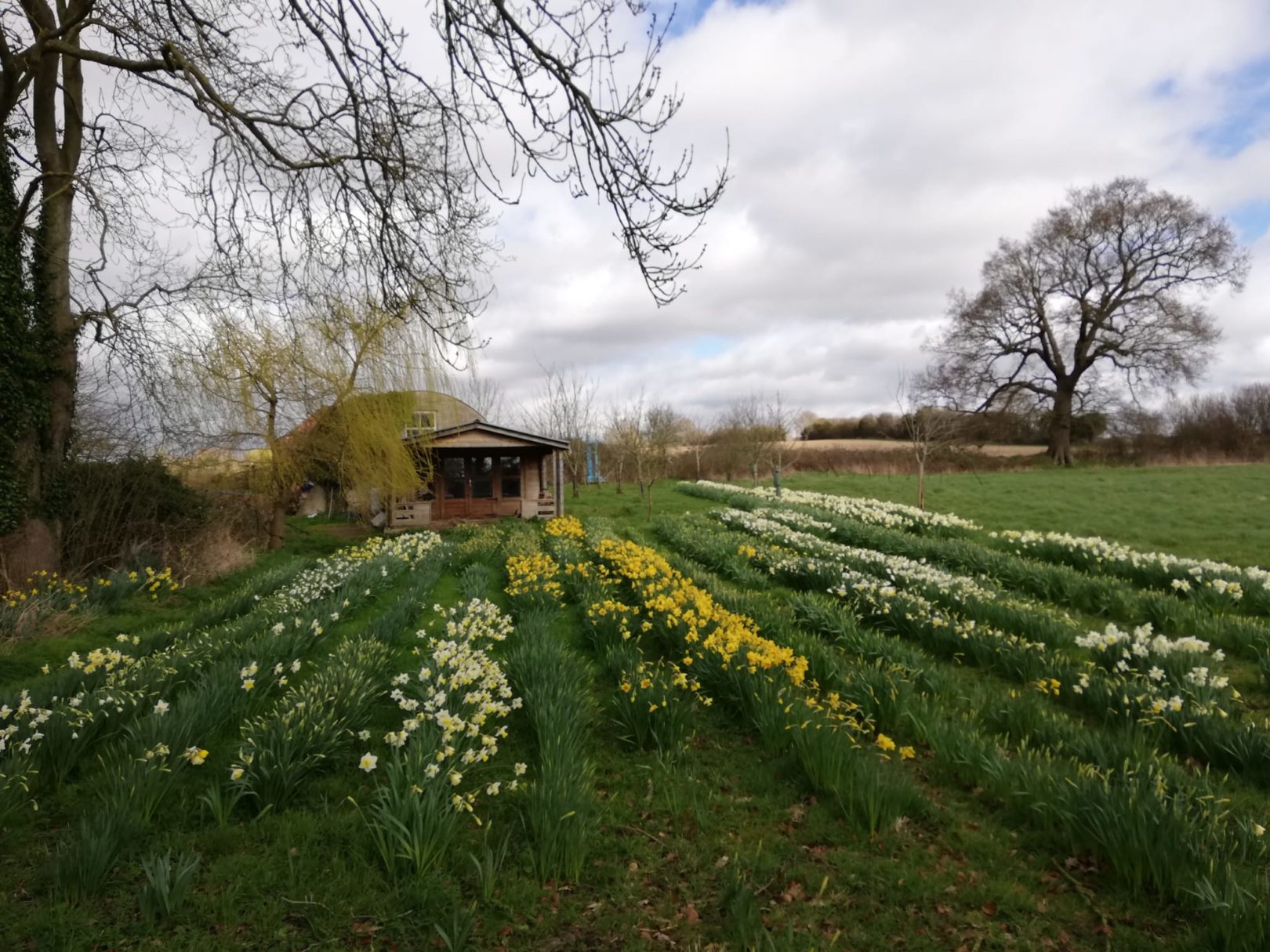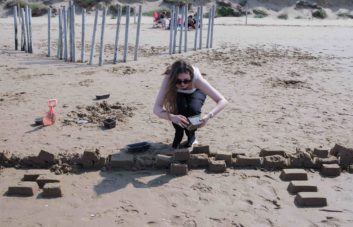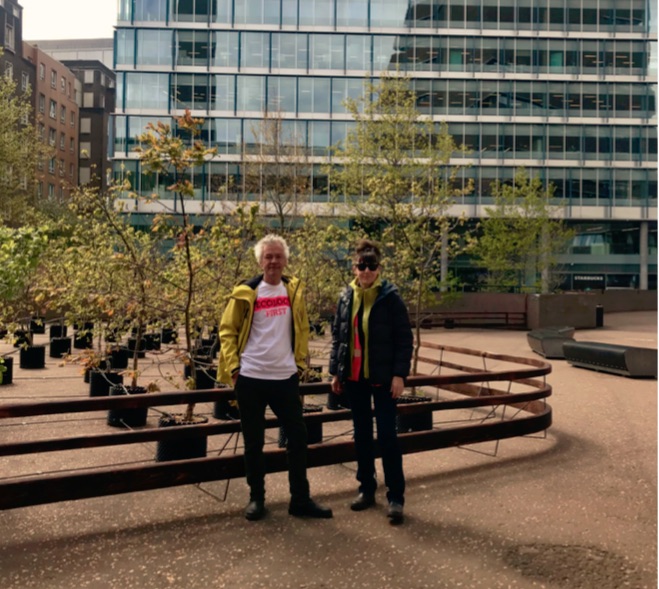Broomhill Meadows is a privately owned piece of conservation wetland , meadow and woodland on the edge of a mid-Norfolk small town. Helen Lindsay and her family are its custodians and owners. They generously make their land and home available for the GroundWork Residency as one of our hosts. Here is an account of the land and how a few of the artists have responded to it.
As a member of GroundWork NetWork Helen has, elsewhere on this site, described her own daily routine in caring for the land and enjoying its many treasures.
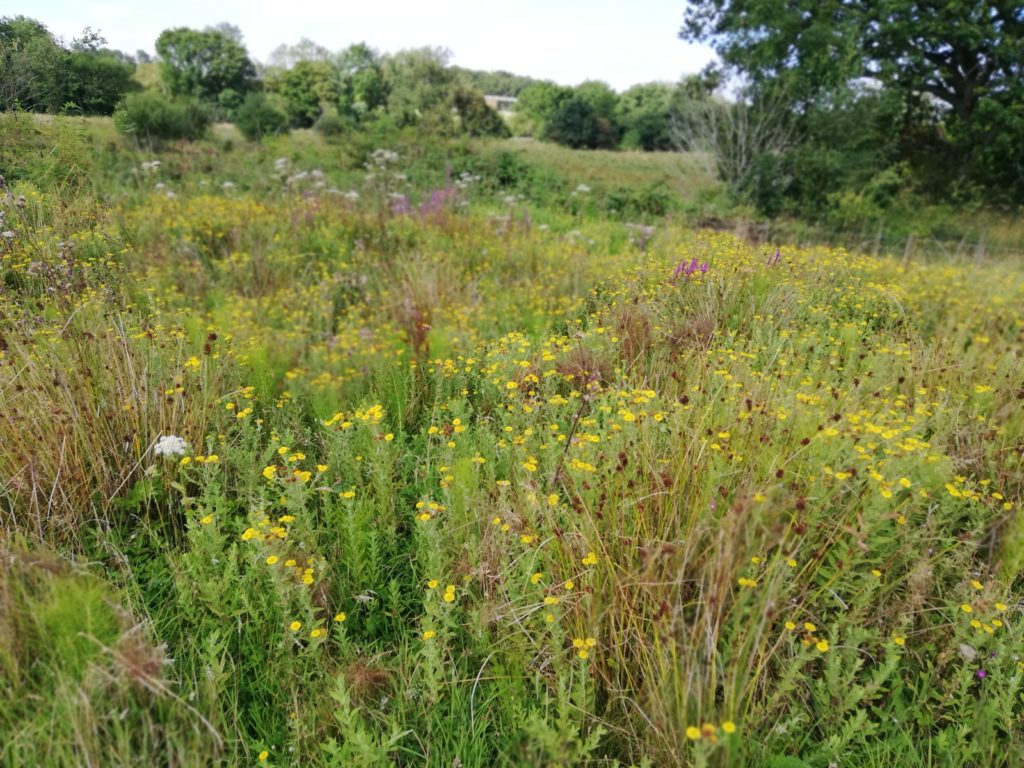
Broomhill Meadows
The largest parcel of land at Broomhill Meadows is a 2-hectare wetland (County Wildlife Site, Ref 1327, Grid Reference: TG 093223). Its an area of neutral grassland, mostly wet but with some dry, sandy areas. Tiny plants grow close to the ground including the square town-hall clock flower, fen orchids, yellow fleabane and purple ragged robin. You could write poetry by simply listing their names.
Criss-crossed by ditches and a fast-flowing water course that skirts its edge, known charmingly as the Blackwater Drain, the land is fed by both ground source and rain water. Several of the ditches, due to Helen’s benevolent neglect, have become leaky dams and formed themselves into small ponds with wild watercress, mint, turquoise blue damselflies and water horsetails.
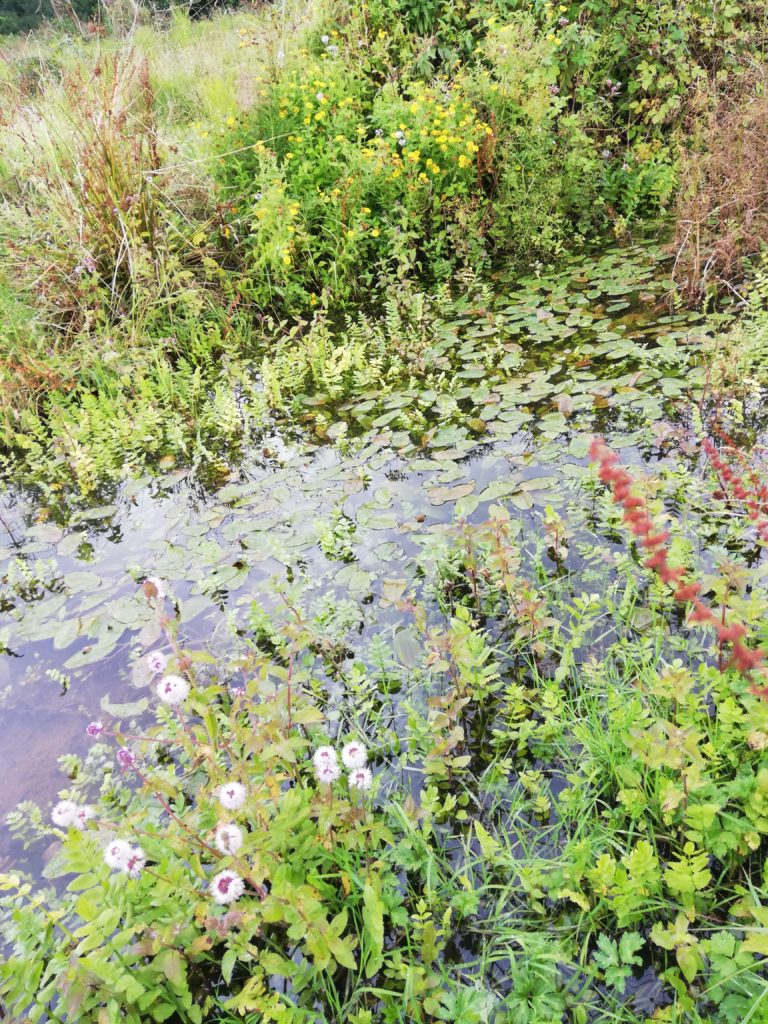
The wetland is ‘conservation’ grazed in the summer by rare breed Gloucester cattle who occasionally break out when they get bored and fancy tramping over the flower beds. The cattle are owned by a local farmer who comes and checks on them every week.
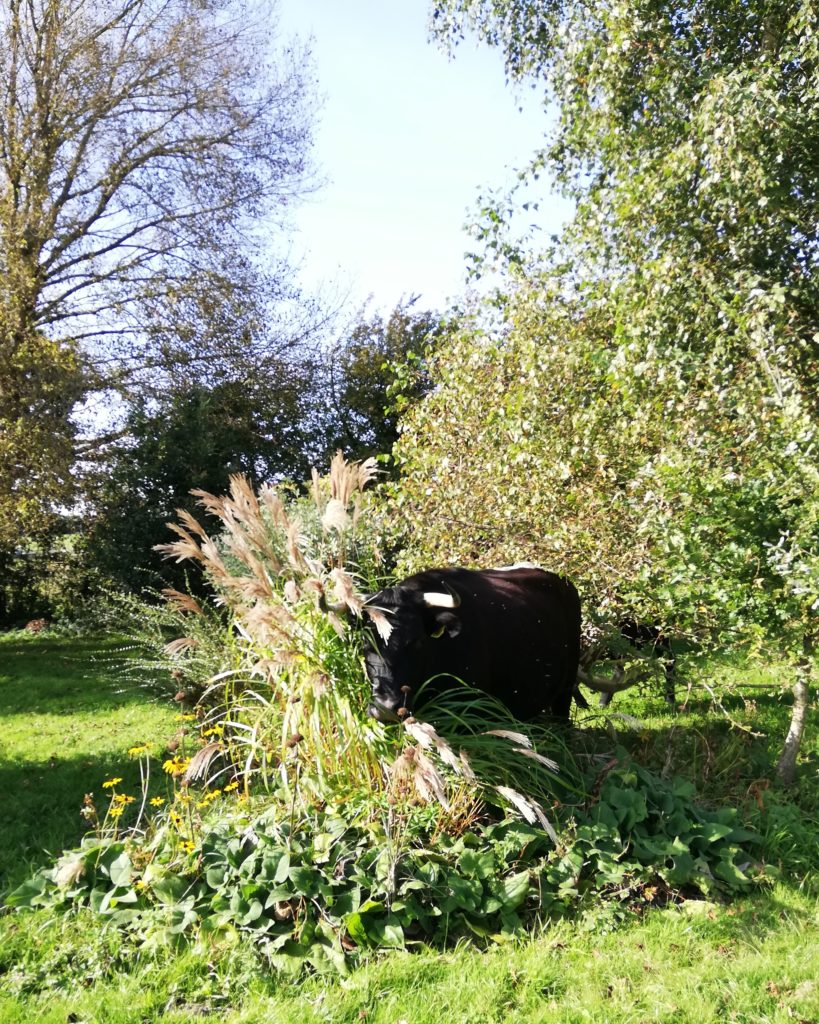
Horsetails and marestails
Healthy wetlands provide a unique habitat for water fed plants, lizards, newts, ground nesting birds, bats and raptors. They store carbon and slow the flow of water, reducing flood risk downstream. Sadly, they are often at risk from encroaching developments bringing lorry loads of concrete to further fragment their already vulnerable and scarce environment.
The wetland supports 5 types of horsetail;
Equisetum fluviatile, water horsetail;
Equisetum telmateia, great horsetail;
Equisetum palustre, marsh horsetail;
Equisetum hyemale, rough horsetail and
Equisetum sylvaticum, wood horsetail.
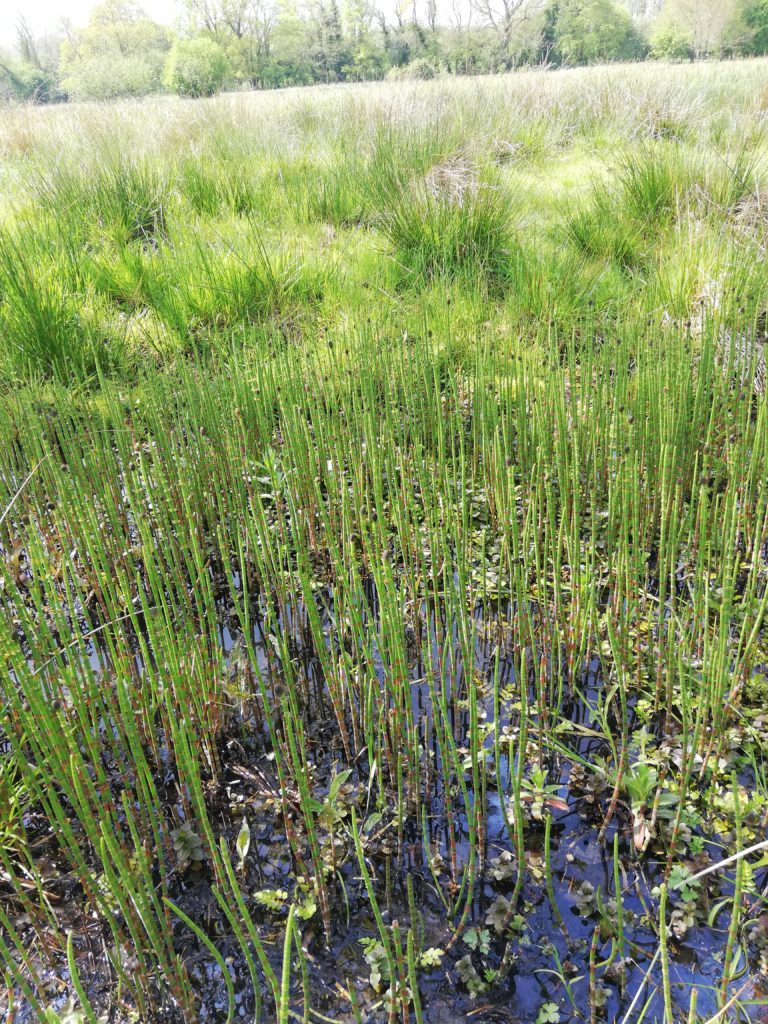
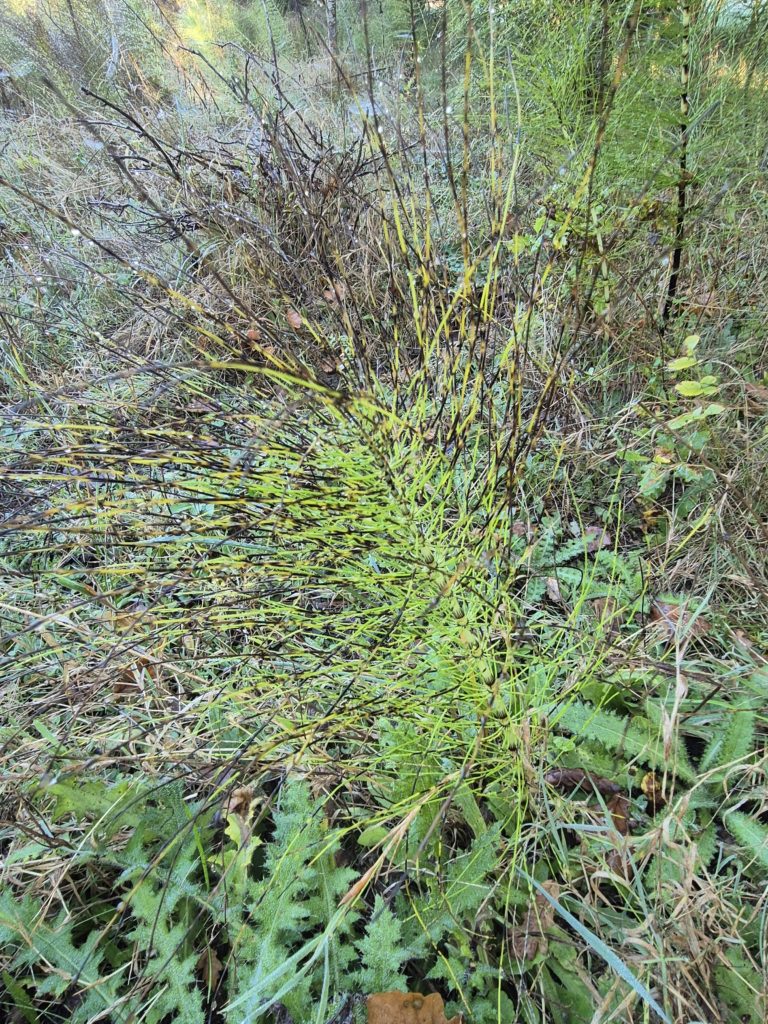
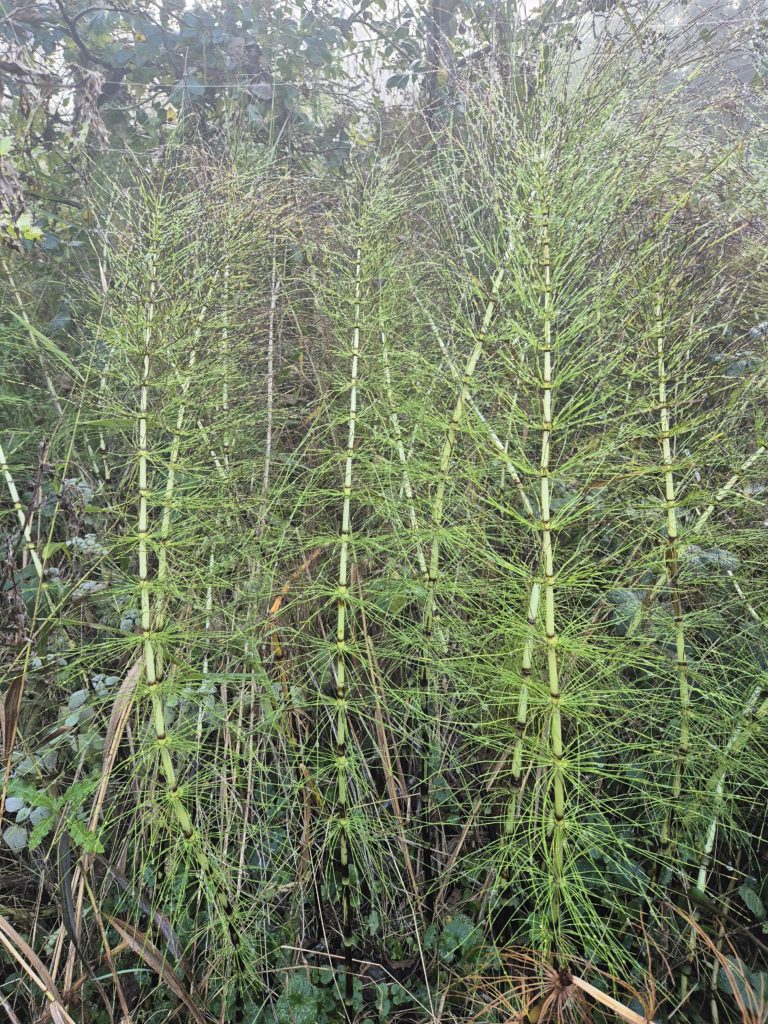
Some people go to great lengths to get rid of marestails. Helen Lindsay revels in their presence. “Leave them alone, I want to shout, when I see comments online and recommendations for poison. They deserve to be here more than you do.” But Helen doesn’t engage. She would rather talk to the weeds.
In the spring the tips of the marestails appear like strange alien forms, their silica rich segmented stems burgeoning into temporary groves of miniature prehistoric forests.
Horsetails, or marestails, only grow where the environment suits them and like so many plants that mature rapidly in spring only to fully die back each autumn, they suit their habitat and are an important species for wetland ecosystems. They are ancient plants and form a link to an environment far beyond human activity with their genus frequently found in fossils from Palaeozoic forests.
Woodland
In 2011, Helen Lindsay received a grant from The Woodland Trust to plant 1,500 trees in one of the fields. It is now a semi-mature wood of English oak, hazel, field maple, alder, ash, hawthorn and willow. Every year the trees grow taller and their shapes change. There are 300 oaks but they’re all different. As they mature and respond to light, nutrients in the soil and their relationship to each other, they demonstrate how healthy growth is dependent on context and intersectionality.
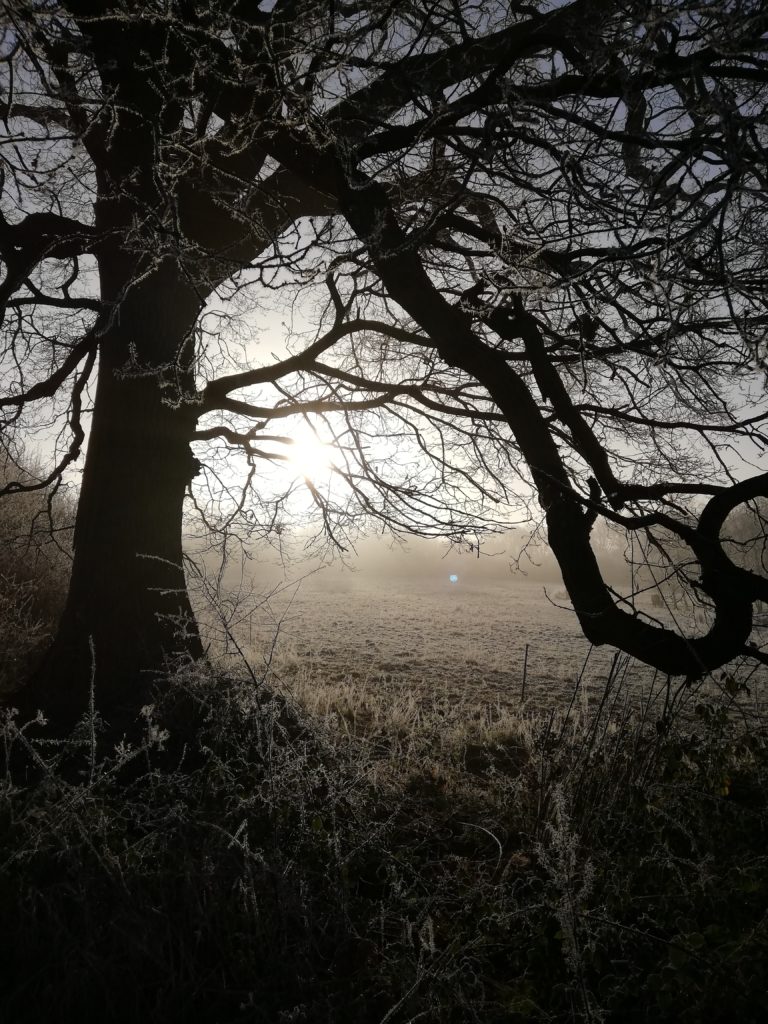
Artist Residencies
Several artists from the GroundWork Gallery residency have stayed and worked at Broomhill. There is a cabin and shepherd’s hut available for makers, finders, writers, to be truly in the environment. The cabin is in a dip and the side windows line up with the apple tree branches and morning sun. The veranda opens out onto rows of daffodils in the spring. The accommodation is comfortable and a good fit for those who enjoy the noise of owls after midnight and waking up under a canopy of trees.
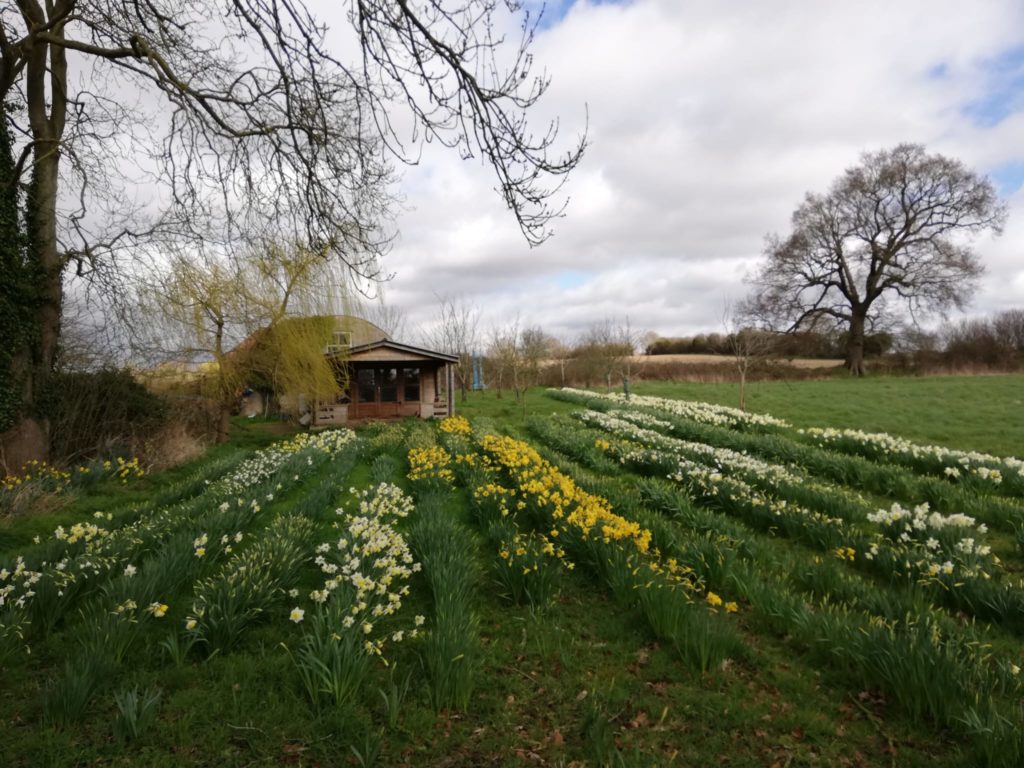
“We didn’t know the daffodils existed when we first came and they were one of the early surprises of the land. The former owner must have planted them as they come up in rows and I have counted 9 different types; white ones, bright yellow ones, trumpets with fluffy frills and small orange or pink edged narcissi. I think there must be in the region of 10,000 in all. They come up in waves, the smallest ones last. I don’t sell them and sometimes feel guilty that we have them all to ourselves.”
James Aldridge
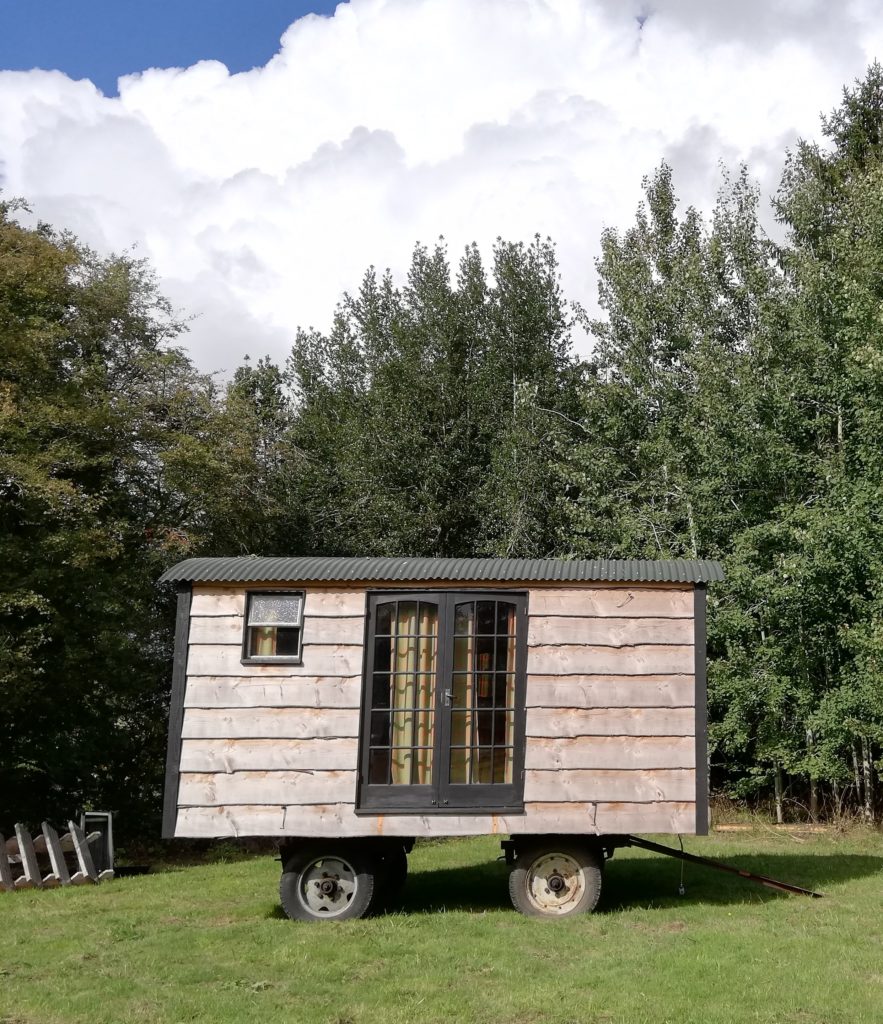
James Aldridge who was in residence in 2024, and exhibited in Ground Up, reflected that:
“Staying at Broomhill was a grounding and nurturing experience in a rich and busy week. Staying in the Shepherds Hut gave the time and space I needed to reflect on and process each day, whilst also knowing that Helen, her home and other artists were nearby for conversation, company and good food. A beautiful location and a homely, supportive atmosphere, thank you.”
Heidi McEvoy-Swift
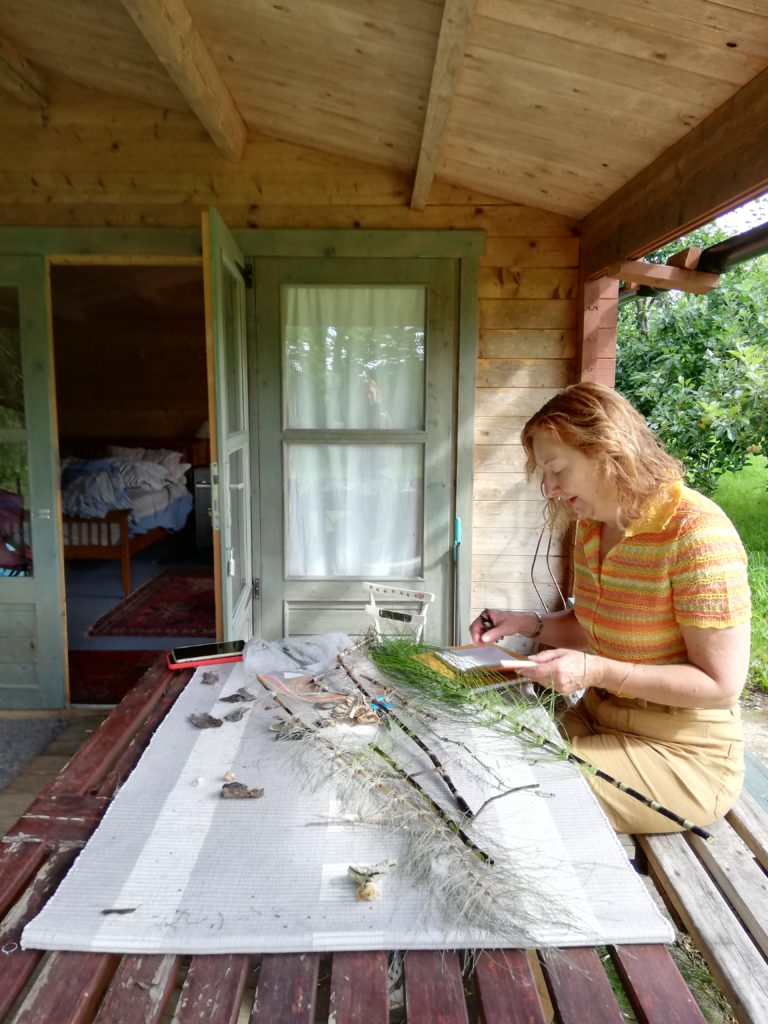
Heidi McEvoy Swift was in residence in 2023 and exhibiuted in The Ground Beneath Our Feet, commented;
“It is interesting to reflect on Broomhill as my home for the residency. Being ‘looked after’ is such a novelty at my age, and yet I did feel looked after. Not only well fed, with lovely home-cooking, but free from responsibilities, to come and go, and just to be. This is such a rare and special feeling. The cabin was certainly a place removed from the norm. Contained and minimal, it held everything I needed to immerse myself in my work.
The days I spent there were focussed and intense. I could concentrate and reflect on the experiences and visits we made and although I did make pieces that I left in place, I became more intent on pieces to take away, using gathered detritus of marestail, broom seed heads, rosehips, grasses, alder cones, and other bits, to build fabrics around. Possibly, and surprisingly the thing that most informed the work I produced, was Helen’s collection of artefacts in the glass fronted case under the stairs. Something about it, with its varied collection of archaeological finds, so like the things we saw in the museum, but small, local, personal, kept haunting me. In retrospect it was this as much as the environment that stayed in my mind when working back at home afterwards.”
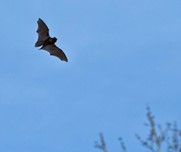
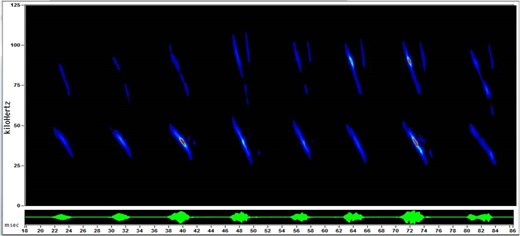
Above: left, a rare Pipistrelle Bat at Broomhill and right, sonification of bat

